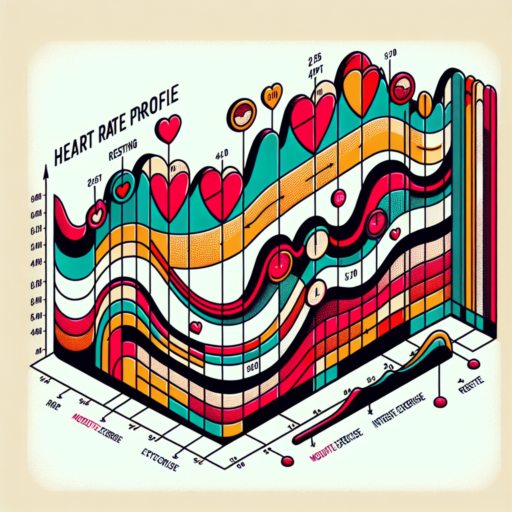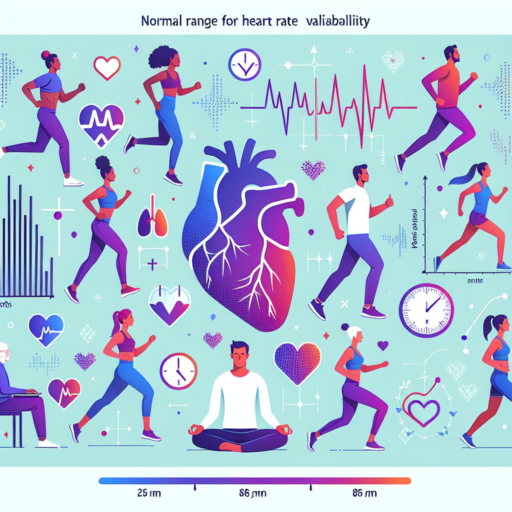What is a good heart rate by age?
Understanding the ideal heart rate by age is crucial for monitoring heart health and overall fitness. Generally, a resting heart rate reflects how efficiently your heart works, and knowing these benchmarks can help you identify health trends over time. It’s important to note that what’s considered a ‘good’ heart rate can vary significantly from one individual to another due to various factors, including activity level, overall health, and medication use.
Chart of Average Resting Heart Rates by Age Group
- Children (ages 6 – 15): 70 to 100 beats per minute
- Adults (age 18 and over): 60 to 100 beats per minute
- Seniors (age 65 and older): 50 to 70 beats per minute
It’s essential to understand that athletes or physically active individuals may have a resting heart rate well below 60 beats per minute, often considered a sign of excellent physical fitness. Conversely, a heart rate consistently above 100 beats per minute (tachycardia) at rest might require a medical evaluation to rule out potential health issues.
The target heart rate zone for moderate to vigorous exercise is another critical aspect to consider. Typically, this zone is calculated as 50 to 85 percent of your maximum heart rate, which can be roughly estimated by subtracting your age from 220. Therefore, adjusting your physical activities to achieve this target can significantly benefit cardiovascular health and endurance training.
Is a resting heart rate of 55 good?
Assessing the quality of a resting heart rate of 55 hinges on several factors, including age, physical conditioning, and individual health status. Generally, a resting heart rate (RHR) between 60 and 100 beats per minute (bpm) is considered normal for most adults. However, athletes and individuals who are extremely fit may have a resting heart rate as low as 40 bpm, indicating efficient heart function and excellent cardiovascular health.
For an adult with a resting heart rate of 55, it’s essential to consider their overall fitness level. If you are highly active, regularly engaging in cardiovascular training, a lower resting heart rate is a sign of good physical condition. It suggests your heart is efficient, pumping a greater amount of blood with each beat, and requiring fewer beats per minute to maintain a steady circulation. This efficiency is often associated with a reduced risk of heart disease and a longer lifespan.
However, if a resting heart rate of 55 is observed in an individual who is not physically active, it may warrant further investigation. While it can still be within a healthy range, especially if the individual does not experience any discomfort, it’s crucial to rule out potential underlying conditions. Arrhythmias, or irregular heart rhythms, and other heart-related issues could manifest as an unusually low resting heart rate in some cases. Consulting with a healthcare provider to ensure that a low RHR is a sign of good health rather than an unnoticed medical condition is advisable.
No se han encontrado productos.
What is a normal heart rate?
Understanding your heart rate is critical for monitoring your health. A normal heart rate varies from person to person. However, for adults, a standard resting heart rate ranges from 60 to 100 beats per minute (bpm). Factors such as age, fitness level, and health conditions can influence this range. Athletes, for instance, often have a lower resting heart rate due to better cardiovascular fitness, sometimes as low as 40 bpm.
It’s important to note that heart rate varies throughout the day, influenced by activities, emotions, and overall health. For instance, stress, exercise, and medication can cause your heart rate to fluctuate. To accurately assess your normal heart rate, it’s advised to measure it upon waking up, before getting out of bed, for consecutive days to gather an average rate.
Determining if your heart rate falls within the normal range is a step towards assessing your cardiovascular health. Consistently high or low readings could indicate underlying health issues that require medical attention. If you are concerned about your heart rate readings, it is crucial to consult with a healthcare professional who can offer personalized advice and potential treatments.
Is a 120 heart rate normal?
Understanding whether a heart rate of 120 beats per minute (bpm) is normal depends on several factors, including age, physical condition, and the context in which the heart rate is measured. Generally, for adults, a resting heart rate ranges from 60 to 100 bpm. A heart rate above this range, such as 120 bpm, might indicate that the heart is working harder than usual.
Physical activity, stress, illness, or even high temperatures can cause temporary increases in heart rate. During exercise, for example, it is normal for the heart rate to rise as the body demands more oxygen and energy. However, if a heart rate of 120 bpm is observed at rest, it could be a sign of an underlying condition or an overactive thyroid, requiring further medical investigation.
When to Seek Medical Advice
If you frequently have a resting heart rate of 120 bpm without a clear reason, it is advisable to consult with a healthcare provider. They can assess if it’s a symptom of a condition such as arrhythmia, which might require treatment. Listening to your body and being proactive about such changes can be crucial for your overall health.




